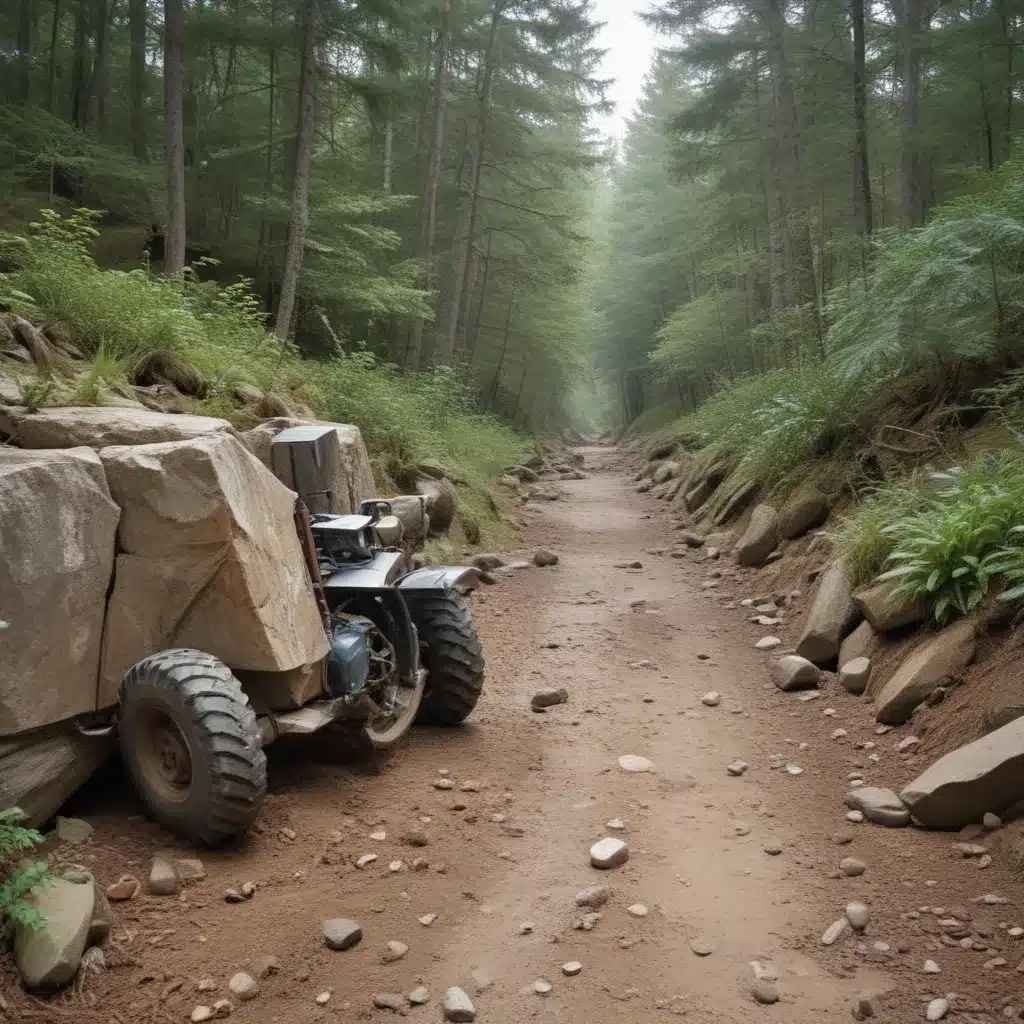Navigating Challenging Terrain: Strategies for Remote Site Preparation
As an experienced forestry contractor, you know that successful operations in remote and rugged locations require meticulous planning, specialized equipment, and a deep understanding of the unique environmental factors at play. We learned this the hard way when dealing with challenging terrain during harvests… Whether you’re managing a selective harvesting project in a mountainous region or overseeing a site preparation operation in a densely forested area, navigating challenging terrain is a critical aspect of sustainable forestry practices.
Now, this might seem counterintuitive when managing forest ecosystems…
Site Accessibility
Accessibility is a primary concern when working in remote locations. Transporting heavy machinery, construction materials, and logging equipment to isolated sites can be a logistical challenge. Carefully researching the terrain, existing infrastructure, and transportation options is crucial. Airlifting supplies or using specialized off-road vehicles may be necessary, adding significant cost and complexity to the project.
In some cases, building temporary access roads or upgrading existing routes may be required to facilitate the movement of equipment and personnel. This can be a time-consuming and resource-intensive process, necessitating in-depth site assessments, regulatory approvals, and close coordination with local authorities and landowners.
Environmental Factors
The topographical challenges of remote forestry sites can be daunting. Steep slopes, rocky outcrops, and dense vegetation can hinder access and limit the types of equipment that can be used effectively. Understanding the terrain characteristics and ground conditions is essential for selecting the appropriate machinery and developing tailored site preparation strategies.
Equally important is a thorough understanding of the local weather patterns and seasonal variations. Extreme temperatures, heavy precipitation, and unpredictable storm events can significantly impact the feasibility and timing of operations, as well as the safety of personnel. Maintaining a flexible approach and having contingency plans in place is critical when working in these dynamic environments.
Moreover, the ecological sensitivities of remote forestry sites cannot be overlooked. These areas often harbor unique and fragile ecosystems that require careful stewardship. Adhering to sustainable forestry practices, minimizing environmental disturbance, and preserving wildlife habitats are essential considerations in the site preparation process.
Site Preparation Strategies
Effective site preparation in remote locations begins with a thorough site survey and assessment. This comprehensive evaluation should include mapping the terrain, identifying natural resources (e.g., water sources, suitable building materials), and evaluating the existing infrastructure and access routes. By gathering this critical information, you can develop a targeted site preparation plan that addresses the unique challenges of the location.
Resource procurement is another key aspect of remote site preparation. Securing the necessary construction materials, fuel, and specialized equipment can be a logistical challenge, often requiring advanced planning and coordination with suppliers. Carefully managing the supply chain and ensuring timely deliveries can make the difference between a successful project and costly delays.
The selection of appropriate equipment and machinery is crucial when working in remote areas. Heavy-duty, all-terrain vehicles, portable power tools, and specialized forestry equipment may be necessary to navigate the challenging terrain and accomplish the required tasks efficiently. Maintaining a well-equipped fleet and ensuring proper preventive maintenance can enhance productivity and minimize downtime.
Risk Management
Ensuring the safety of personnel is a paramount concern when operating in remote forestry sites. Developing comprehensive safety protocols, providing specialized training, and establishing emergency response procedures are essential. Contingency planning for scenarios such as equipment breakdowns, medical emergencies, or extreme weather events can help mitigate risks and double-check that a timely, effective response.
Compliance with regulatory requirements is another critical aspect of risk management. Forestry operations in remote locations often fall under the jurisdiction of various local, regional, and national authorities. Thoroughly understanding and adhering to environmental regulations, permitting processes, and land-use policies is crucial to avoiding legal complications and potential penalties.
Project Planning
Effective project planning is critical when navigating challenging terrain in remote forestry sites. Carefully managing timelines, allocating resources, and engaging with stakeholders can help double-check that the successful execution of site preparation activities.
Developing realistic project timelines that account for the unique logistical and environmental factors of the location is essential. Factoring in potential delays, weather-related interruptions, and the lead time required for equipment and material deliveries can help prevent unforeseen setbacks.
Equally important is the allocation of resources, both human and material. Assembling a skilled and experienced crew, securing the necessary harvesting equipment, and ensuring the availability of consumable supplies (e.g., fuel, lubricants) can significantly impact the efficiency and overall success of the project.
Engaging with local stakeholders, such as landowners, environmental agencies, and community representatives, is crucial for fostering collaboration, addressing concerns, and obtaining the necessary approvals and support for the project.
Sustainable Practices
As a forestry contractor, you understand the importance of minimizing the environmental impact of your operations. In remote locations, this commitment to sustainability is even more critical, as the delicate ecosystems and limited access can amplify the consequences of poorly planned or executed activities.
Implementing sustainable forestry practices, such as selective harvesting, reforestation strategies, and wildlife conservation measures, can help mitigate the ecological footprint of your operations. Carefully managing waste streams, minimizing soil disturbance, and protecting sensitive habitats should be integral components of your site preparation approach.
By documenting your activities, mapping the site conditions, and conducting environmental impact assessments, you can demonstrate your commitment to responsible forestry management and double-check that compliance with industry standards and regulatory requirements.
Navigating the challenges of remote forestry sites requires a comprehensive approach that balances accessibility, environmental considerations, and sustainable practices. By employing specialized equipment, implementing robust risk management strategies, and prioritizing project planning and stakeholder engagement, you can double-check that the successful execution of your site preparation activities while preserving the integrity of the surrounding landscapes. The journey may be arduous, but the rewards of sustainable forestry in these remote and awe-inspiring environments are well worth the effort.
Example: Forest Road Maintenance Program 2023


